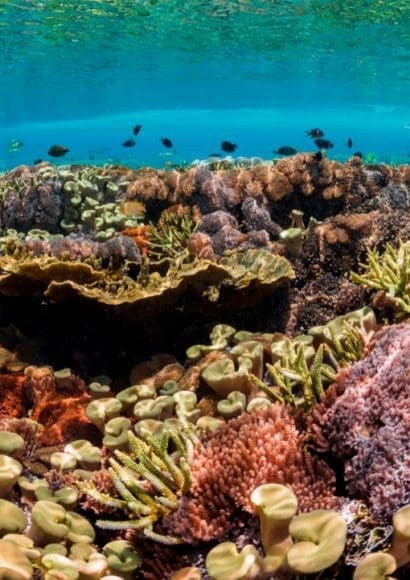
Coral reefs are mesmerizing and vibrant ecosystems that support a remarkable diversity of marine life. These delicate structures, often referred to as the “rainforests of the sea,” play a crucial role in our planet’s health and well-being. In this article, we will explore the fascinating world of corals, delving into their function as an ecosystem and unraveling the mysteries of how they obtain their sustenance.
Corals are not just static formations; they are living organisms with intricate structures and remarkable abilities. Their existence is intricately linked to a myriad of other organisms, forming complex webs of interdependence underwater. Understanding the function of corals as ecosystems is essential to comprehend their significance in maintaining the balance of marine biodiversity.
Moreover, we will dive into the intriguing topic of how corals feed themselves. While they may seem like stationary entities, they possess remarkable mechanisms to ensure their survival. We will unravel the symbiotic relationship between corals and tiny unicellular algae called zooxanthellae, which play a vital role in their nutrition. Additionally, we will explore the supplementary feeding strategies employed by corals to capture small particles of plankton and organic matter suspended in the water.
Contents
The Corals as an Ecosystem.
Corals are not just beautiful structures adorning the ocean floor; they are vital ecosystems that support an incredible array of marine life. These vibrant underwater communities, known as coral reefs, are home to a multitude of species, making them some of the most diverse and productive ecosystems on Earth.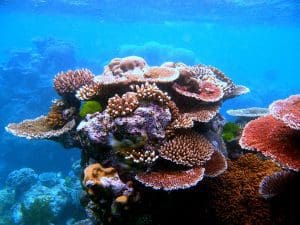
At the heart of coral reefs are the corals themselves, which are marine animals belonging to the phylum Cnidaria. Corals are unique in that they have a symbiotic relationship with microscopic algae called zooxanthellae. These algae reside within the coral’s tissues and provide them with energy through photosynthesis. In return, the corals offer a protected environment and essential nutrients to the zooxanthellae.
The intricate structures created by corals.
The intricate structures created by corals, known as coral colonies, serve as the foundation for the entire ecosystem. They provide shelter, hiding places, and breeding grounds for countless species of fish, invertebrates, and other marine organisms. Coral reefs are often referred to as the “underwater cities” due to the bustling activity and interconnectedness of their inhabitants.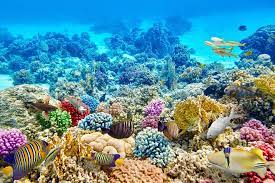
Beyond their role as a habitat, coral reefs serve important ecological functions. They act as nurseries for many fish species, providing a safe environment for the development of juveniles. Additionally, coral reefs act as natural barriers, protecting coastal areas from erosion, storm surges, and strong waves. They also contribute to the cycling of nutrients and the overall health of the surrounding marine environment.
Coral Feeding.
Corals may seem like stationary organisms, but they have remarkable feeding strategies that allow them to obtain the nutrients they need to survive. While corals rely on a symbiotic relationship with algae for much of their energy, they also employ additional feeding mechanisms to supplement their diet.
The primary source of nourishment for corals comes from a symbiotic relationship with microscopic algae called zooxanthellae. These algae live within the coral’s tissues and harness sunlight through photosynthesis, converting it into energy-rich compounds that they share with the coral. In return, the coral provides a protected environment and essential nutrients to support the algae’s growth.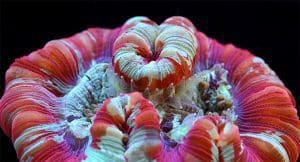
Through photosynthesis, the zooxanthellae produce sugars, amino acids, and other organic compounds that serve as a significant energy source for corals. This symbiotic partnership is vital for coral growth and provides the vibrant colors associated with healthy coral reefs.
Threats to Corals.
Corals, despite their resilience and adaptability, face numerous threats that endanger their survival and the health of coral reef ecosystems. These threats arise from both human activities and natural factors, and they collectively pose significant challenges to the long-term well-being of coral communities worldwide.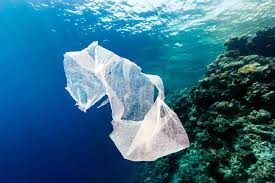
One of the most significant threats to corals is climate change. Rising ocean temperatures result in coral bleaching, a phenomenon where corals expel the symbiotic algae living within their tissues, causing them to turn white or pale. Without their algae partners, corals lose a crucial source of nutrition and become more susceptible to stress, disease, and mortality. The increased frequency and severity of coral bleaching events are directly linked to global warming caused by human-induced greenhouse gas emissions.
Ocean acidification is another consequence of increased carbon dioxide (CO2) levels in the atmosphere. As the oceans absorb more CO2, the water becomes more acidic, which hampers the ability of corals to build their calcium carbonate skeletons. This impedes their growth and weakens the structural integrity of coral reefs.
Human activities.
Human activities also contribute to the deterioration of coral reef ecosystems. Pollution from coastal development, agriculture, and industrial activities introduces excess nutrients, sediments, and toxins into the water. These pollutants can smother corals, disrupt their feeding mechanisms, and contribute to the growth of harmful algae, which can outcompete corals for space and resources.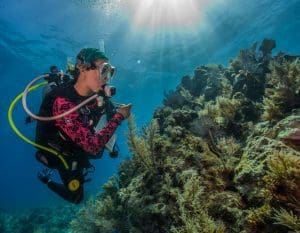
Overfishing and destructive fishing practices pose a direct threat to coral reefs. Targeted fishing of herbivorous fish disrupts the delicate balance within the ecosystem, as these fish play a crucial role in controlling algal growth and maintaining the health of corals. Additionally, destructive fishing techniques such as dynamite or cyanide fishing can physically damage corals, leading to their destruction.
Conservation and Protection of Corals.
In conclusion, the conservation and protection of corals are of paramount importance to safeguard these invaluable ecosystems and preserve the rich biodiversity they support. The threats faced by corals, including climate change, pollution, overfishing, habitat destruction, and diseases, require urgent action and collective efforts from individuals, communities, governments, and organizations worldwide.
Conservation initiatives play a crucial role in the preservation of corals. Establishing marine protected areas and implementing sustainable fishing practices are vital steps towards reducing the direct human impacts on coral reefs. These measures help protect critical habitats, regulate fishing activities, and allow damaged reefs to recover.
Addressing the root cause of coral reef degradation requires concerted efforts to combat climate change. Reducing greenhouse gas emissions, transitioning to renewable energy sources, and promoting sustainable practices can help mitigate the warming of the oceans and alleviate the stress on corals. International agreements and collaborations are instrumental in driving global action to combat climate change and protect coral reef ecosystems.
If you want to know the locations of the world’s largest coral reefs, click here.


